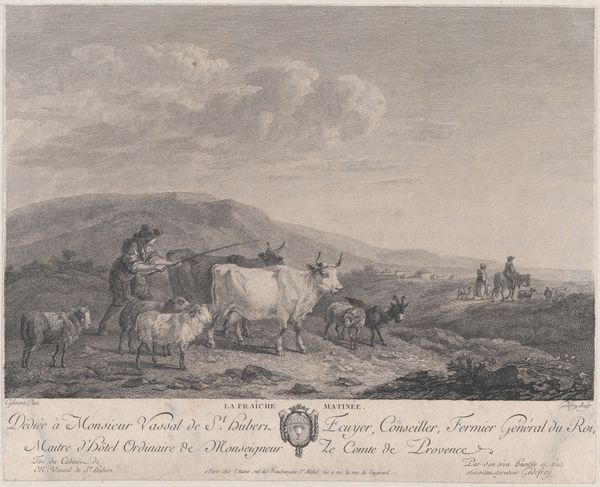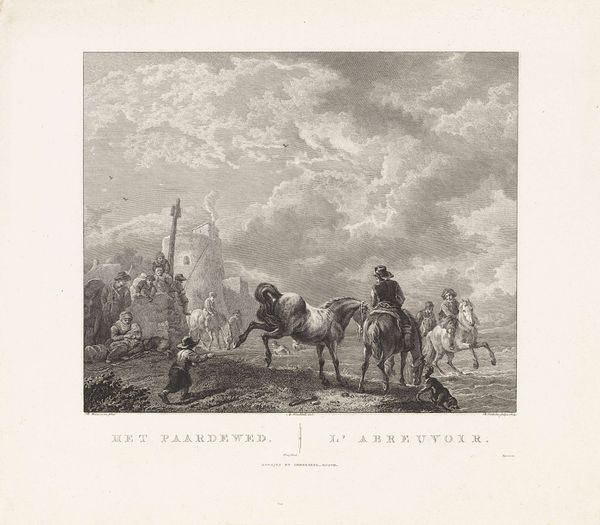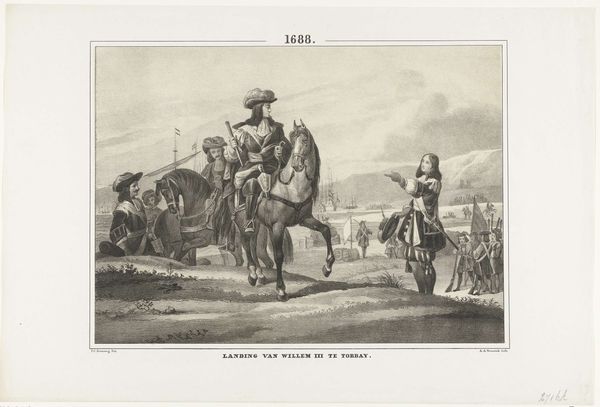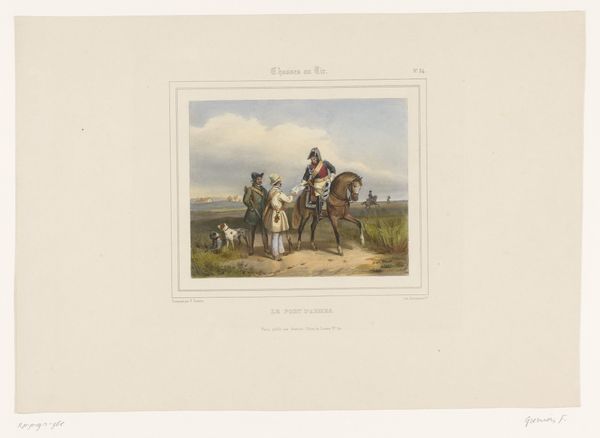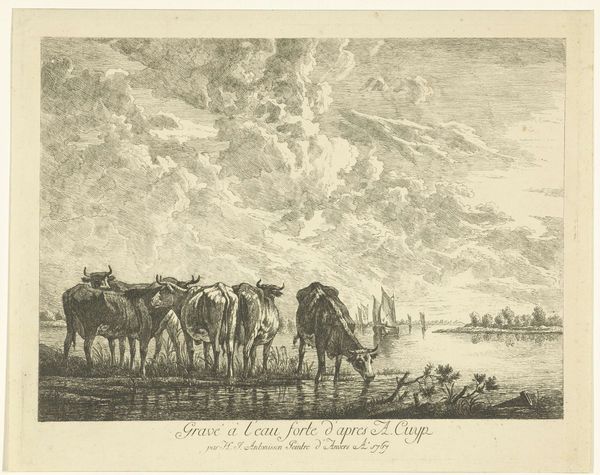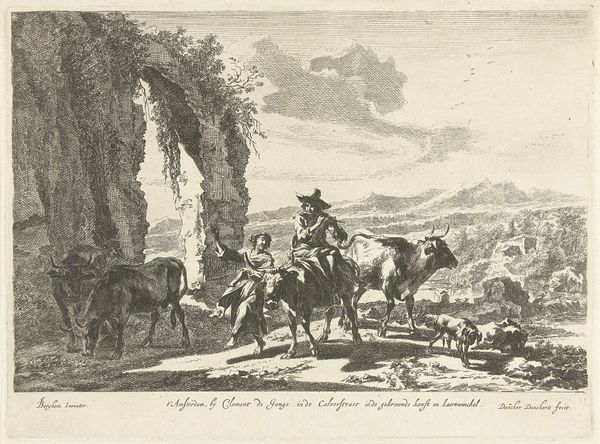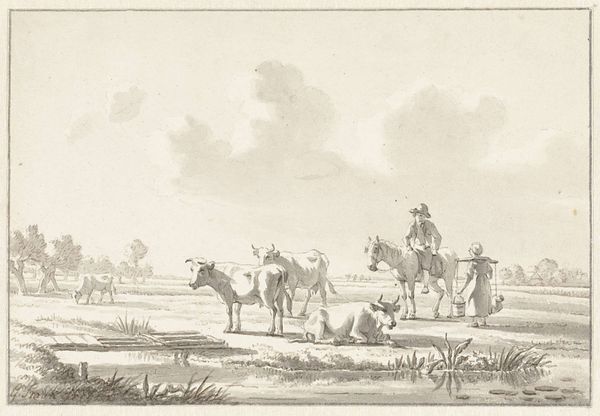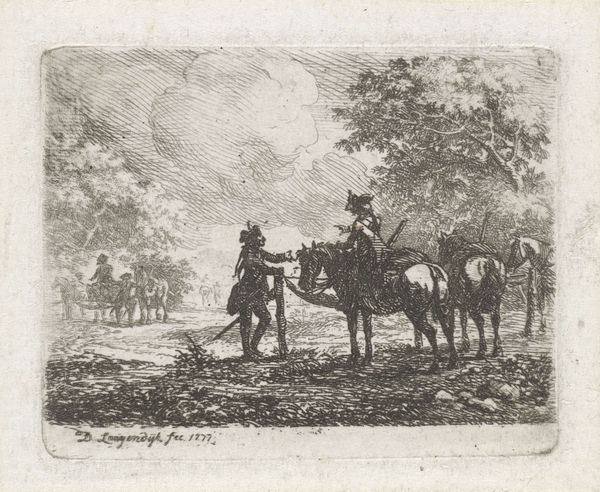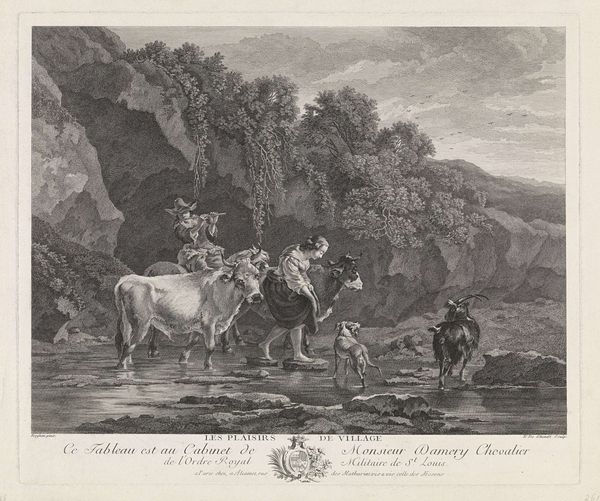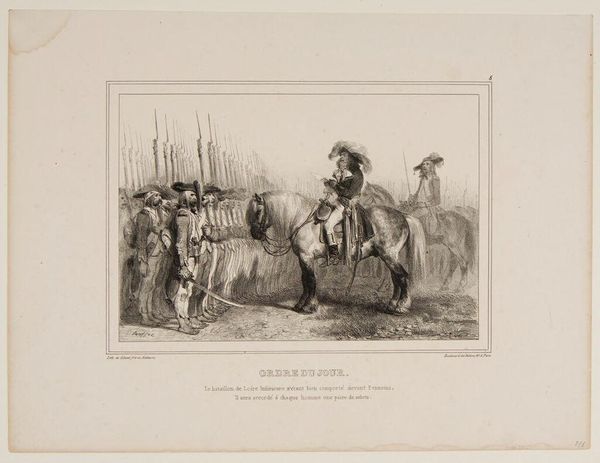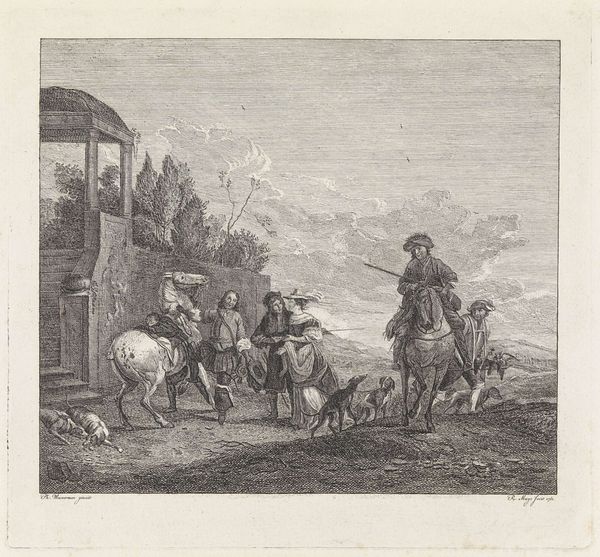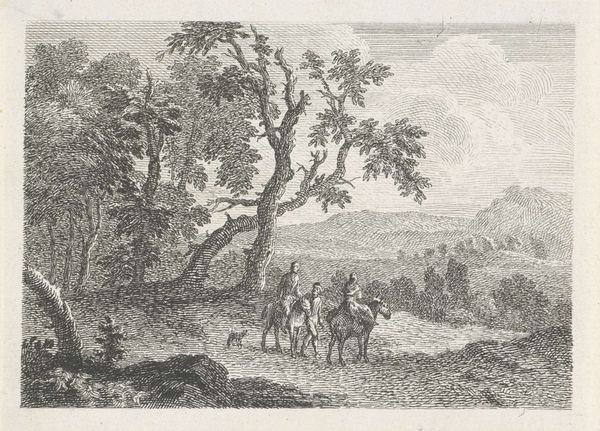
Dimensions: height mm, width 387 mm
Copyright: Rijks Museum: Open Domain
Editor: This is "Farmers Finding Weapons in the Field," a pencil drawing by Simon van den Berg from 1855, currently at the Rijksmuseum. It feels like a very direct, unassuming scene – a family and their ox in a field, with something ominous discovered at their feet. What symbolic weight do you see in this image? Curator: Indeed. The unexpected presence of discarded weapons transforms a peaceful agrarian scene. The farmers represent timeless toil, connection to the land. The weapons, though, are a disruption; they suggest recent conflict, perhaps a battle or political upheaval that the land silently absorbed. The ox pulling the plough? It’s a potent symbol of resilience and endurance. Editor: Resilience how? Curator: Oxen are work animals, stoic symbols of relentless labor, aren't they? Their presence here speaks to an enduring way of life, even in the face of violence. But look closer, what do the positions of the man and woman, juxtaposed with these weapons, tell you? Editor: Well, the man seems curious, almost examining one of the weapons, while the woman stands slightly apart. Does that speak to gendered responses to violence perhaps? Or a shared concern for the future? Curator: Possibly both. The discarded arms themselves become symbols of uncertainty. The potential disruption of peace. Consider too, the Romantic landscape tradition... isn't it ironic, with man dominating the wilderness suddenly becoming witness to the residue of human conflict. The visual vocabulary is rich. Editor: That makes so much sense! I was focused on the surface narrative, but the interplay of symbols reveals a much deeper, unsettling commentary about the human condition. Curator: Precisely. Images often hold layered meanings accumulated across generations. "Boeren vinden wapens op het land," captures both a moment in time and a timeless human struggle.
Comments
No comments
Be the first to comment and join the conversation on the ultimate creative platform.
